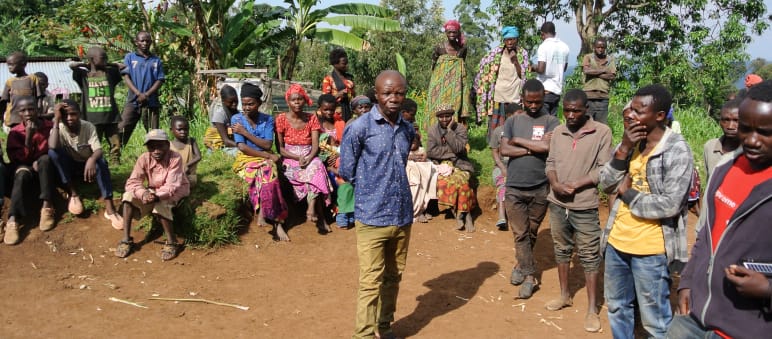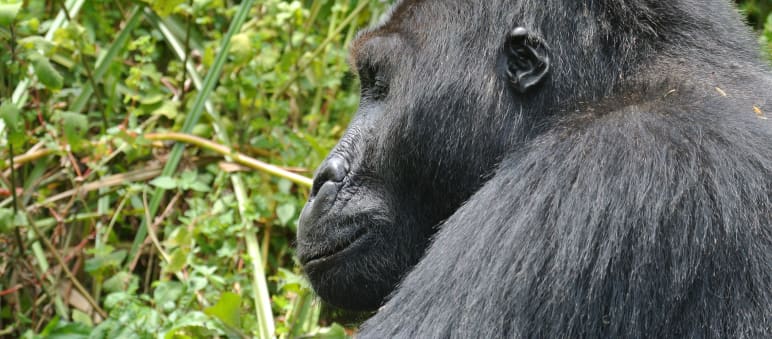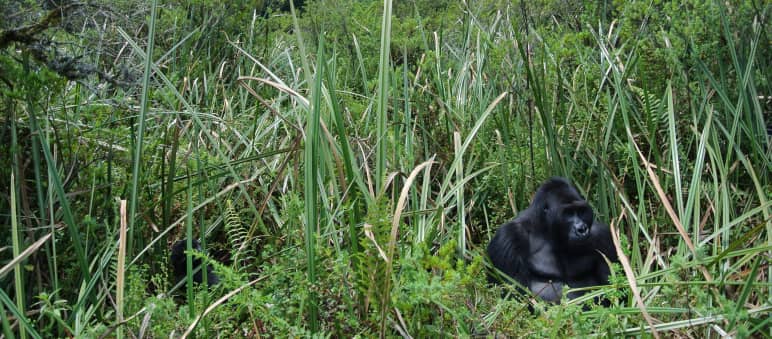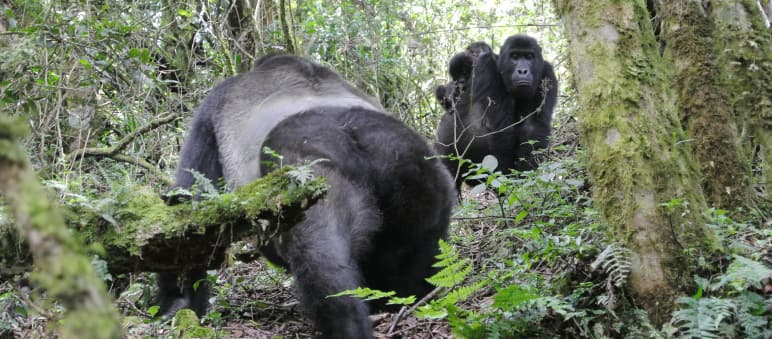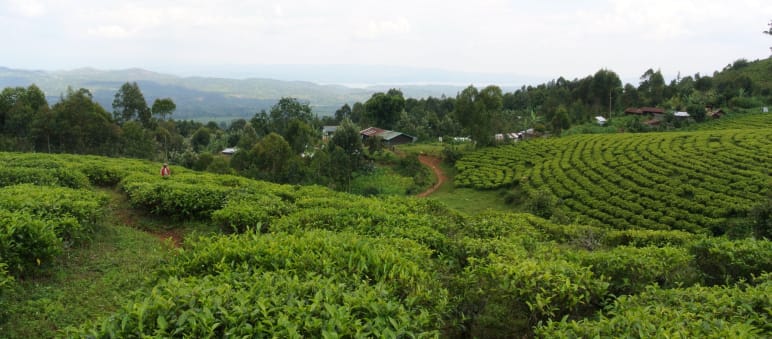The Batwa people and the gorillas
In the misty heart of Kahuzi-Biega, silverback Bonané savors bamboo while his twins play nearby – a scene of wild grace. But the Batwa people, once forest guardians, were expelled when this gorilla haven was created. Now they face poverty and violence. Through our partner CAMV’s work, hope takes root: land titles secured, orange groves planted, 20,000 seedlings nurture soil and futures.
Project Overview
Project FocusRainforest Defenders
Project Objective ensuring a better future for the Batwa Indigenous people
Activities obtaining land titles, generating income, planting trees
The silverback Bonané is a picture of serenity: The gorilla is sitting in the morning sun and nibbling on bamboo with unmistakable enjoyment. Nearby, a juvenile gorilla is frolicking in the tall grass. The two only give the human visitors a brief glance. Later, Bonané wanders off to the nearby edge of the forest with the young one in tow. His mate is waiting there with twin babies on her back.
Bonané and his family are one of the attractions of Kahuzi-Biega National Park in the far east of the Democratic Republic of the Congo. This is the only place in the world where visitors can observe eastern lowland gorillas in the wild – and just one of the reasons why the reserve is internationally renowned as a UNESCO World Heritage Site.
The landscape of the Albert Rift is spectacular: A mountain range covered by dense forest that is bracketed by two extinct volcanoes, Kahuzi (3,308 meters) and Biega (2,790 meters). Lake Kivu lies on the eastern flank, while the Congo Basin, the second largest rainforest area on Earth, extends to the west. The forest is largely intact, and its continued protection could be decisive to the outcome of the climate emergency.
In addition to gorillas, Kahuzi-Biega is home to chimpanzees and twelve other primate species, as well as forest elephants, hippos and leopards. Of its 349 bird species, 42 are endemic. Its biodiversity is unusually rich because the park encompasses both mountain ranges and lowlands.
Our partner CAMV
The Centre d'accompagnement des Autochtones Pygmées et Minoritaires Vulnérables (Center for the Support of Indigenous Pygmies and Vulnerable Minorities – CAMV) is an organization active in the villages on the edge of Kahuzi-Biega National Park. Pacifique Mukumba is its chairman. CAMV’s work is focused on the Batwa Indigenous people.
Challenges and solutions
Kahuzi-Biega is synonymous with gorilla conservation, but it also stands for the pain of the Batwa people. They once lived in harmony with the forests and roamed them as semi-nomads. It is thanks to their way of life that the forests are intact. But the Batwa, of all people, are now living in poverty because of conservation: the establishment of the park in 1970, and especially its expansion to 600,000 hectares in 1975, saw them expelled from their ancestral home.
Many Batwa are unemployed and have no fields on which to farm. The national park does not employ them and the income from tourism passes them by. The violence that the park’s rangers inflict on the Batwa when they enter the protected area is particularly frightening. And if this were not challenging enough, militias are on the move in the jungle – and the Batwa get caught in the crossfire when the Congolese army steps in.
Pacifique Mukumba and his team have been working for many years to reconcile Indigenous rights and rainforest conservation, because measures to protect nature cannot succeed without taking local people into account.
In its latest project, CAMV is securing land in the villages of Bitale and Buziralo for which the Batwa will be granted collective property titles. They will then be able to farm that land and plant mango and orange trees. The organization is also reforesting areas with tree species that enrich the soil with nitrogen, protect it from erosion and stabilize the water balance. This helps to secure people’s livelihoods and reduces pressure on forests for firewood and other necessities. In the pilot villages near the provincial capital Bukavu, CAMV will establish tree nurseries for an initial 20,000 seedlings and build 14 composting plants. To address conflicts, the organization is ensuring that in addition to 280 Batwa households, 120 households of their non-Indigenous neighbors will also benefit from this project.
While CAMV is rooted in the Lake Kivu region, it is also active further afield: The organization, which was founded in 1995, acts as an observer and advisor in several UN and African Union bodies, particularly on issues such as human rights and the rights of Indigenous peoples. CAMV has been a Rainforest Rescue partner since early 2022.
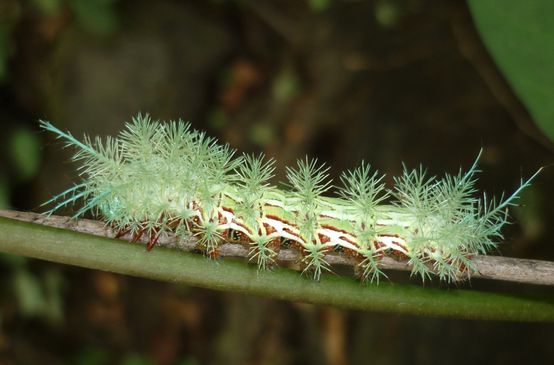
Biodiversity
Life on Earth originated around 4 billion years ago. Since then, an unfathomable number of species have evolved, around half of which are insects. Numerous plant and animal species have yet to be documented, and many new ones are being discovered every day.
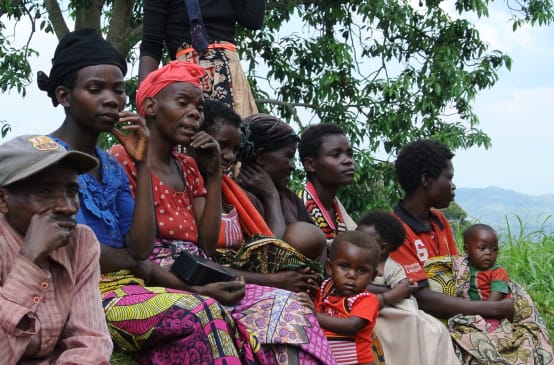
DRC: Expulsion of the Batwa people ruled unjust
The African Commission on Human and Peoples’ Rights has issued a historic ruling in favor of the Indigenous Batwa: They have the right to return to their ancestral lands.
